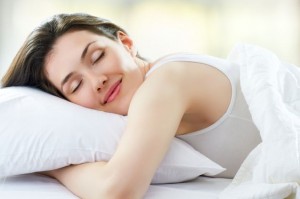
There are a huge number of sleeping disorders which can be classified in a number of ways. One way of categorising sleeping problems is using the DSM 5 classification (American Psychiatric Association, 2013). This new system describes sleep disorders as ‘Sleep-Wake Disorders’, and there are 10 categories in this section:-
(1) Insomnia Disorder
(2) Hypersomnolence Disorder
(3) Narcolepsy
(4) Breathing-Related Sleep Disorders
(5) Circadian Rhythm Sleep-Wake Disorders
(6) Non-Rapid Eye Movement (NREM) Sleep Arousal Disorders
(7) Nightmare Disorder
(8) Rapid Eye Movement (REM) Sleep Behaviour Disorder
(9) Restless Legs Syndrome
(10) Substance/Medication-Induced Sleep Disorder.
There is also a number of separate sleep disorders that fit into these categories: a full list of sleeping syndromes is listed below. Most individuals who suffer from a sleeping disorder complain that the timing or quality of their sleep is impaired. This can lead to irritability, loss of concentration and reduced performance during the day. Many sleeping disorders have more profound effects on the individual’s quality of life: for instance, concomitant problems may include anxiety, varying levels of stress and depression.
The following inventory, however, is a list of the sleeping disorders taken from ICSD-3 (2014). I find this to be the best way of categorizing these problems: it is very similar to their classification in DSM 5 but much easier to understand. This system sub-divides sleeping disorders into six categories, thus:-
(1) Insomnia
(2) Sleep-Related Breathing Disorders
(3) Central Disorders of Hyposomnolence,
(4) Circadian Rhythm Sleep-Wake Disorders
(5) Parasomnias
(6) Sleep Related Movement Disorders.
1. Insomnia
The ICSD-3 defines insomnia as “a repeated difficulty with sleep initiation, duration, consolidation, or quality that occurs despite adequate opportunity and circumstances for sleep, and results in some form of daytime impairment.”
The ICSD-3 groups insomnia into 4 major categories listed below.
a. Chronic insomnia disorder
b. Short-term insomnia disorder
c. Other insomnia disorder
d. Isolated symptoms and normal variant
2. Sleep-Related Breathing Disorders
These disorders are divided into those of central origin (characterized by a lack of breathing effort) and those caused by an obstruction of the airways.
a. Obstructive sleep apnoea disorders
i. Obstructive sleep apnoea, adult
ii. Obstructive sleep apnoea, paediatric
b. Central sleep apnoea syndrome
i. Central sleep apnoea with Cheyne-Stokes breathing
ii. Central sleep apnoea due to a medical disorder w/o Cheyne-Stokes breathing
iii. Central sleep apnoea due to high altitude periodic breathing
iv. Central sleep apnoea due to medication or substance
v. Primary central sleep apnoea
vi. Primary central sleep apnoea of infancy
vii. Primary central sleep apnoea of prematurity
viii. Treatment-emergent central sleep apnoea
c. Sleep-related hypoventilation disorders
i. Obesity hypoventilation syndrome
ii. Congenital central alveoloar hypoventilation syndrome
iii. Late-onset central hypoventilation with hypothalamic dysfunction
iv. Idiopathic central alveolar hypoventilation
v. Sleep-related hypoventilation due to medication or substance
vi. Sleep-related hypoventilation due to medical disorder
d. Sleep-related hypoxemia disorder
e. Isolated symptoms and normal variants
i. Snoring
ii. Catathrenia
3. Central Disorders of Hypersomnolence
The ICSD-3 categorizes this class of sleep disorders as those in which “the primary complaint is daytime sleepiness not caused by disturbed nocturnal sleep or misaligned circadian rhythms.”
a. Narcolepsy type I
b. Narcolepsy type II
c. Idiopathic hypersomnia
d. Kleine-Levin syndrome
e. Hypersomnia due to a medical disorder
f. Hypersomnia due to a medication or substance
g. Hypersomnia associated with a psychiatric disorder
h. Insufficient sleep syndrome
4. Circadian Rhythm Sleep-Wake Disorders
These disorders are characterized by a disturbance or disruption to the normal circadian rhythm, which causes patients to experience excessive daytime sleepiness, insomnia, or both.
a. Delayed sleep-wake phase disorder
b. Advanced sleep-wake phase disorder
c. Irregular sleep-wake rhythm
d. Non-24-hour sleep-wake rhythm disorder
e. Shift work disorder
f. Jet lag disorder
g. Circadian rhythm sleep-wake disorder not otherwise specified (NOS)
5. Parasomnias
A parasomnia is an unwanted physical movement or action during sleep. This group of disorders is classified by disorders or arousal from NREM sleep, those associated with REM sleep, and other parasomnias.
a. NREM-related parasomnias
i. Disorders of arousal from NREM sleep
ii. Confusional arousals
iii. Sleepwalking
iv. Sleep terrors (or night terrors)
v. Sleep-related eating disorders
b. REM-related parasomnias
i. REM sleep behavior disorder
ii. Recurrent isolated sleep paralysis
iii. Nightmare disorder
c. Other parasomnias
i. Exploding head syndrome
ii. Sleep-related hallucinations
iii. Sleep enuresis
iv. Parasomnia due to medical disorder
v. Parasomnia due to medication or substance
vi. Parasomnia, unspecified
d. Isolated symptoms and normal variants
i. Sleep talking
6. Sleep-Related Movement Disorders
This class of disorders is characterized by simple, often repetitive movements during sleep or wake that can disrupt the sleep of the patient, the patient’s bed partner, or both.
a. Restless leg syndrome
b. Periodic limb movement disorder
c. Sleep related leg cramps
d. Sleep-related bruxism
e. Sleep-related rhythmic movement disorder
f. Benign sleep myoclonus of infancy
g. Propriospinal myoclonus at sleep onset
h. Sleep-related movement disorder due to medical disorder
i. Sleep-related movement disorder due to medication or substance
j. Sleep-related movement disorder, unspecified
Many of the sleeping disorders are listed elsewhere in our glossary. The combined use of psychotherapy and hypnotherapy is very effective in the treatment of many sleeping disorders.
David Kraft


